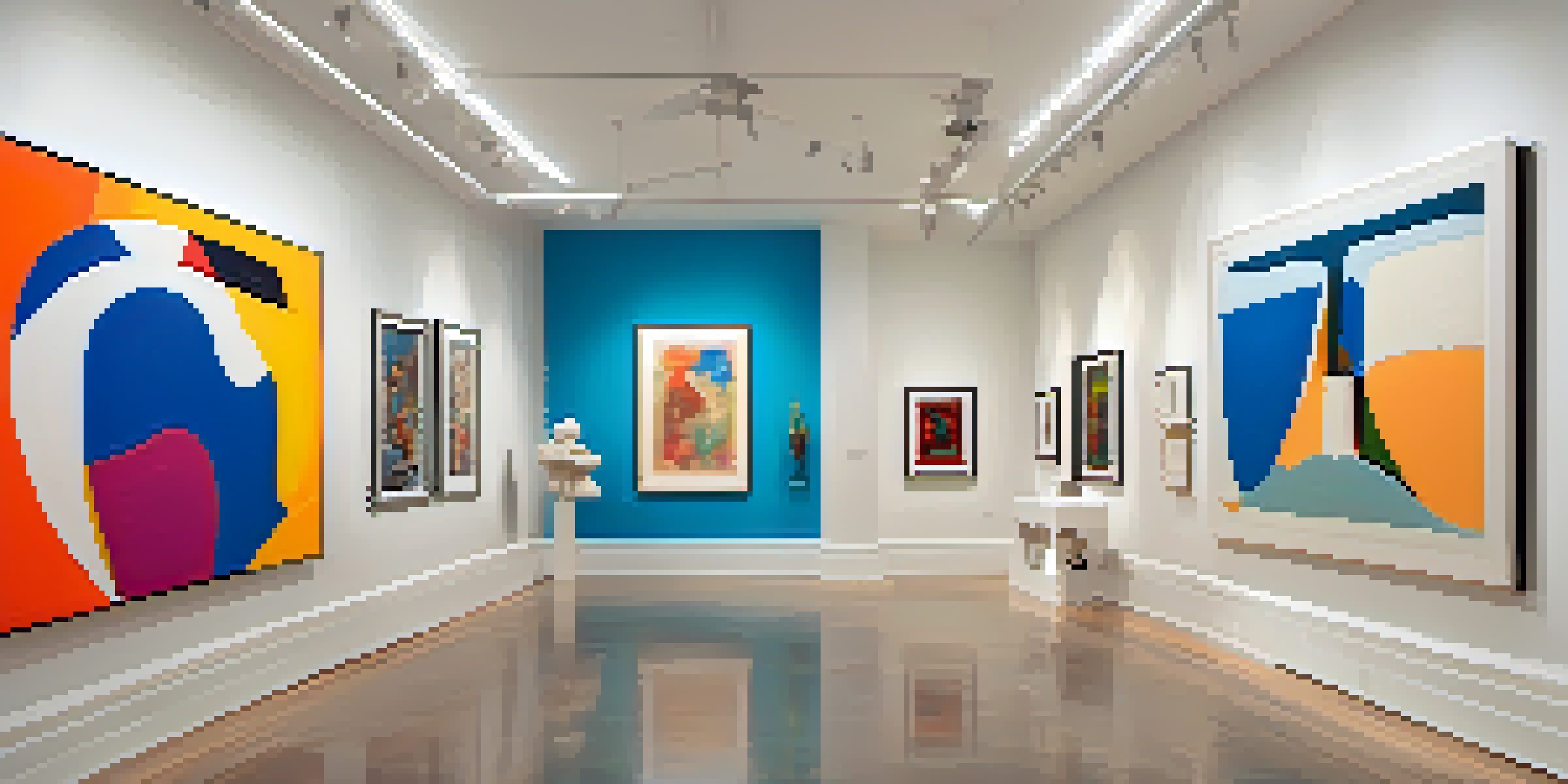Art Collectors as Influencers in the Global Art Market

The Evolving Role of Art Collectors in Today's Market
Art collectors have transformed from merely passive buyers to influential figures who shape market trends. Their interests can drive up the prices of specific artists or genres, creating ripples throughout the art community. This shift has empowered collectors to not only curate their own collections but also influence the broader art narrative.
Art is not what you see, but what you make others see.
For instance, when a prominent collector acquires a piece, it often garners significant media attention, which can elevate the artist's profile. This phenomenon is akin to how celebrity endorsements can boost a product's popularity. In the same vein, collectors' preferences can dictate which artists emerge as the next big thing in the art world.
As a result, the art market has become increasingly interconnected, with collectors acting as pivotal nodes in the network. Their decisions can impact galleries, auction houses, and even emerging artists, highlighting their crucial role in the art ecosystem.
Social Media: A New Platform for Art Collectors
The advent of social media has revolutionized how art collectors engage with the art world. Platforms like Instagram and Twitter allow collectors to showcase their collections and connect with artists, galleries, and fellow enthusiasts. This digital presence not only elevates their status but also enables them to influence potential buyers worldwide.

For example, when a collector shares a new acquisition on Instagram, it can spark a wave of interest in that artist or style. Followers may rush to learn more about the piece or even seek to acquire similar works. This instant feedback loop creates a vibrant marketplace where trends can shift rapidly, driven by collectors' online activities.
Collectors Shape Art Market Trends
Art collectors have evolved into influential figures who can drive market trends and elevate the profiles of specific artists.
Moreover, social media fosters a sense of community among collectors, enabling them to share insights and experiences. This collaborative spirit can lead to joint ventures, exhibitions, or even new art movements, showcasing the profound impact of digital platforms on the art ecosystem.
Art Advisors and Their Influence on Collectors
Art advisors play a critical role in shaping the tastes and decisions of collectors. These professionals provide valuable insights into market trends, helping collectors make informed choices about their investments. Their expertise can often mean the difference between a wise purchase and a regrettable one.
The collector’s role is to create a bridge between the artist and the audience.
For instance, an art advisor might recommend emerging artists whose work is poised for appreciation, guiding collectors toward valuable investments. This relationship is akin to having a financial advisor who helps you navigate the stock market, ensuring that your portfolio reflects both personal taste and market potential.
As collectors increasingly rely on advisors, these professionals have gained considerable influence over the art market. Their recommendations can elevate certain artists or styles, shaping public perception and altering the trajectory of the art world.
The Impact of Collectors on Art Valuation
Collectors play a pivotal role in determining the value of art. Their willingness to pay top dollar for specific works can set benchmarks that influence the entire market. This dynamic relationship between collectors and valuation is essential for understanding how art prices fluctuate over time.
When a collector purchases a piece at auction for a record price, it not only enhances the status of that work but also can lead to increased valuations for similar pieces. It’s a bit like how a rare baseball card's value increases when a celebrity collector buys it—suddenly, everyone wants one.
Social Media Amplifies Collector Impact
Platforms like Instagram allow collectors to showcase their acquisitions, creating a dynamic marketplace that influences trends and connects enthusiasts.
The result is a constantly evolving landscape where collectors' preferences and spending habits directly impact art valuations. This interplay shapes the market, creating a complex web of influence that underscores the importance of collectors in the art world.
The Collector's Influence on Artistic Trends
Art collectors often have a profound impact on the artistic trends that emerge over time. By choosing to support specific styles or artists, they can help bring certain movements into the mainstream. This process is reminiscent of how fashion trends often stem from the tastes of influential figures in the industry.
When collectors gravitate toward a particular aesthetic, it can create a snowball effect, encouraging galleries and artists to focus on that direction. This phenomenon was evident when contemporary artists began to gain traction as collectors started to value their work more highly, leading to a surge of interest in contemporary art.
Ultimately, collectors serve as trendsetters, guiding the artistic landscape with their purchase decisions. Their influence not only affects market dynamics but also shapes the cultural narrative around art, highlighting the symbiotic relationship between collectors and artists.
The Ethical Responsibilities of Art Collectors
With great influence comes great responsibility, and art collectors are no exception. As they shape market trends and valuations, they also bear the ethical weight of their decisions. This includes considerations around provenance, authenticity, and the impact of their purchases on artists’ livelihoods.
For instance, collectors are increasingly scrutinized for their role in promoting sustainable practices within the art world. This includes supporting artists who prioritize ethical sourcing and environmental consciousness, much like consumers choosing eco-friendly products in other markets.
Ethics Drive Collector Responsibilities
Collectors bear the ethical responsibility to consider provenance and sustainability, promoting transparency and integrity within the art community.
By embracing these ethical considerations, collectors can foster a more equitable art market. Their choices can encourage transparency and integrity, ultimately benefiting the entire art community and ensuring a more sustainable future for artists and collectors alike.
The Future: Collectors as Catalysts for Change
As the global art market continues to evolve, collectors are poised to be at the forefront of change. Their influence can lead to new initiatives, collaborations, and even movements that challenge conventional norms within the art world. This role as catalysts for change is both exciting and essential.
For instance, collectors are increasingly investing in underrepresented artists and advocating for diversity within the art community. This shift not only enriches the cultural landscape but also fosters a more inclusive art market that reflects a broader spectrum of human experience.

Looking ahead, the potential for collectors to drive meaningful change in the art world is immense. As they embrace their roles as influencers, they can help shape a more innovative and equitable future for artists and collectors alike.